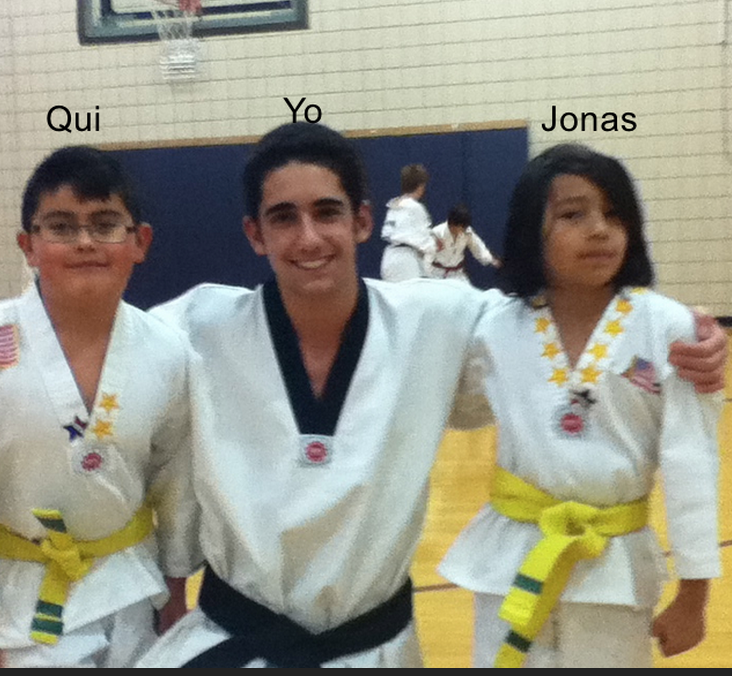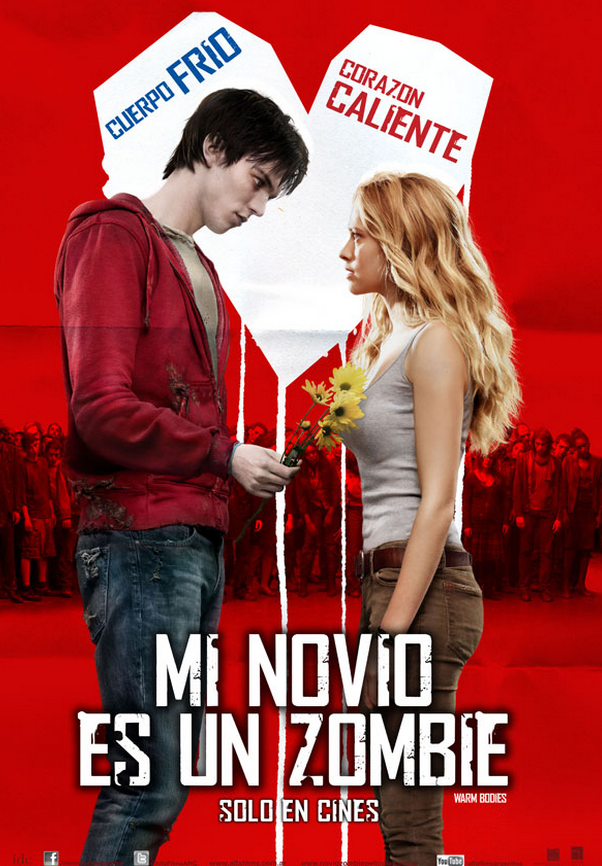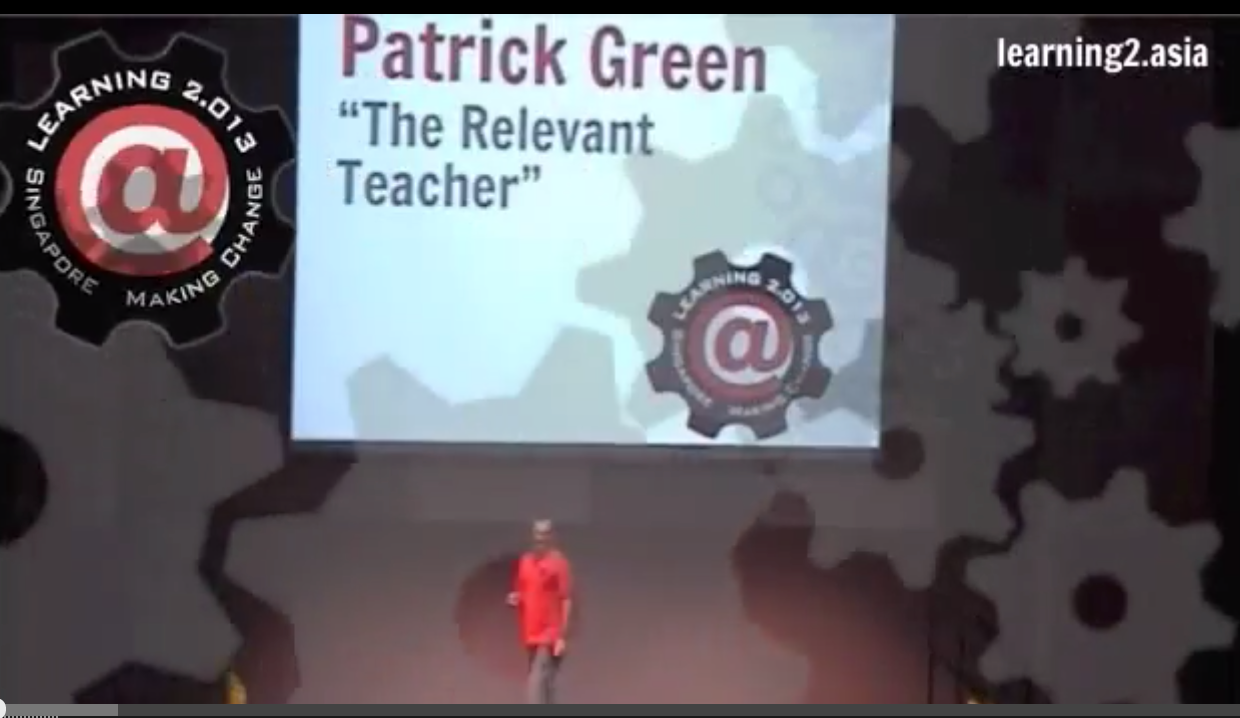Sharing our mini presentations with our amigos in Singapore
/Quick video of our class trying the infamous durian fruit and sharing truths and lies about our friends in Singapore. We sent off the link last week. We hope they enjoyed it.
Quick video of our class trying the infamous durian fruit and sharing truths and lies about our friends in Singapore. We sent off the link last week. We hope they enjoyed it.
Evan made a motor. It was so cool even though it didn't work. Thomas saved money to send to his former surf instructor in Costa Rica to help pay for his upcoming wedding. Vivian taught us about different types of rice in Central America. Gerson took us through his journey from El Salvador to Colorado earlier this year.
Content for Spanish class this past month was not typical of most Spanish textbooks.

My students just finished up their 20% Time Projects. As reported in a previous post, this was my second round of projects. Their results proved inspiring content and rich language for our class this past month.
Students chose passions and interests to investigate by which they were able to improve their Español, connect with others, and save the world.
Student feedback
Wanting to know what my students thought of the project and not wanting to break into English, I sent them in the hall with another student who recorded their feedback in English. Here are a few examples of what they thought of the project.
My Reflection
My students' oral proficiency in Spanish improved because I was able to provide relevant vocabulary I knew they were going to need prior to their presentations. They didn't email me back, it surprised me that, and I had wanted to do... but changed my mind were common language structures we practiced and practiced before kids presented. There are even a few more structures I'll add to my list for next time like I could not find or I realized that... Students (me included) also learned specific vocabulary tied to their topic and their interest. This year's group was more comfortable with sharing as we discussed and modeled delivery and design. The reading of slides was highly discouraged. I didn't allow notecards, although a few students did bring up cards which I allowed reading the anxiety on their face. The biggest challenge for them was connecting with others. Most students picked someone they knew or friends of friends as their connection. I was hoping for more global connections or more specific communications with people specific to their particular passion. I get it. The concept of reaching out to strangers is difficult and even more so in a second language. Next time I'll spend more time on how and why to make global connections. We'll practice. I'll also give more time for student-teacher 1:1 conferences so I can individually help students brainstorm connections with similar passions or interests. This, however, is a challenge for me as class sizes seem to grow and grow but I think maybe offering online Google Hangout hours could be an option. Lastly, I'll put a time limit (with a friendly bell) on the sharing. Maybe something similar to a Pecha Kucha (or shorter) because with classes of 30, it takes a while. Some of my students felt comfortable going on and on. They were so darn cute that I didn't have the heart to cut them off.
What successes have you had with similar type projects?
After recently reading the Step by Step Guide to Global Collaboration, I was reminded of a project my students and I participated in years ago. My 4th grade Spanish class in Colorado connected with a 4th grade class in Costa Rica. Kids were paired together to create stories together using our wiki. As a way to get to know our buddies, we created a VoiceThread and my students talked about the others kids each student's personal slide.
For example. Sammi's favorite animal is a Lion or Carly's favorite color is blue.
Lots of language practice while also building community. We embedded the VT into our wiki and shared it with our amigos in Costa Rica.
DVE meets CDS (link to the VT if it doesn't load)Fast forward a few years. Students are in 6th grade. I decided to use the initial VT to assess students language. I added a current picture of the student and asked students to comment on each student as they did back in 4th grade. Student loved seeing their previous pictures and listening to their voice samples. This year, I'm doing it again as this group (8th grade) moves to the high school next fall. VT, already a fantastic collaborative tool, is also fantastic to capture growth over time. What tools are you using to track student growth (especially oral communication) over time?
In the last few days I have found 30 + valuable Tweets containing content that I will use at some point in the next few weeks. Here are just a few of the resources that showed up in my Tweetdeck app that I have shared with colleagues.



Día de los muertos Mi novio es un zombi The Relevant Teacher
As good as Twitter is, I am still one of the only teachers that uses it in my District for Professional Development. So, in order to share content/resources/connections, I have to use a listserve, an email or a face-to-face conversation. Sure, it take another few steps to share out the content to teachers not on Twitter. However, we need to meet teachers where they are at the moment.
I like what AJ Julian writes in It's OK for Teachers NOT to be on Twitter . "Twitter may not be for everyone. There are other options that might be better for various reasons for others."
I agree. I joined the MoreTPRS listserve almost 20 years ago and am still a member. I never would have learned what I have about language acquisition and methodology without the inspiration and collaboration of this amazing network. I have formed many friendships with these educators and look forward to seeing them in person at various conferences around the world. I cannot yet claim the same for my Twitter relationships. For years many of these amazing language teachers were not yet on Twitter so I spent my Language Learning PD mostly on the MoreTPRS listserve (meeting them where they were). I used Twitter for more Tech, Leadership, and general Education topics. Thankfully, many of these awesome language teachers are now on Twitter.
Yes, let's meet our teachers where they are but slowly sharing with them the power and ease of Twitter or Google + is a good thing, too. I plan to give another little demo on the power of building your own PLN. Twitter will be the first tool I mention. If you are thinking of doing the same, here are a few resources you might want to use. Twitter Handout
Twitter 101 Presentation
“If you aren’t standing on the edge, you are taking up too much space. ”
“Education is not a preparation for life: education is life itself.”
“Never doubt that a small, group of thoughtful, committed citizens can change the world. Indeed, it is the only thing that ever has.”
“The best way to predict your future is to create it.”